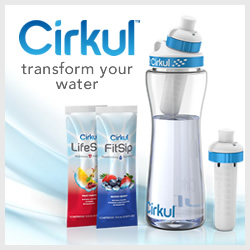| [wp_eMember_compact_login] |
<< Back to eCourse Lesson Menu |
Just about everyone has a little sweet-tooth at least once in a while. In this lesson, you’ll earn which sweeteners you want to avoid and which one’s are healthier options. So when you crave a little something sweet, you’ll know how to make the correct choice.
– Bad Sweeteners (strictly avoid)
White Sugar – Is chemically refined/bleached, all the natural minerals have been stripped out.
Brown Sugar – Is just white sugar with some molasses added back in for color and taste.
Powdered Sugar – Is finely ground “white sugar” that is typically mixed with cornstarch.
High-Fructose Corn Syrup (HFCS) – This common sweetener, found in just about all processed foods, is chemically derived from corn (which is typically GMO). High-Fructose Corn Syrup is made of 50 to 60% fructose. After eating fructose, 100 percent of the metabolic burden rests on your liver. The fatty acids created during fructose metabolism accumulate as fat droplets in your liver and skeletal muscle tissues, causing insulin resistance and non-alcoholic fatty liver disease (NAFLD). For more in-depth information on fructose see Fructose: Is it Killing Your Liver?.
Agave Nectar – Agave Nectar is produced in a similar method as Corn Syrup, by pressing the juice/sap from the plant and then hydrolyzing it with heat and/or enzymes to separate the starch from the fructose. So all you are left with is pure concentrated fructose, about 70 to 80% in the case of Agave Nectar. (Yes even higher than HFCS!) A disturbing fact is that Agave Nectar has been pushed as “safe for diabetics”. But, even the Glycemic Institute has recently stop their trials of it on Diabetics due to severe side-effects.
– Moderate Sweeteners (very minimal use)
SUGAR ALCOHOLS
Xylitol – Is a sugar alcohol, first made from birch trees in Finland. It is now made from beets (US) and corn (China) – both of these are typically GMO (genetically modified). Xylitol is produced by hydrogenation, which converts the sugar into a primary alcohol. When consumed in moderate to large amounts xylitol has been proven to cause gastro-intestinal upset (diarrhea, stomach cramps, etc.). It is also highly toxic, and even fatal, to dogs.
Erythritol – Erythritol is a sugar alcohol similar to xylitol. Just like other sugar alcohols, erythritol is known to cause problems with the digestive tract. Although not particularly dangerous, over-consumption of erythritol can lead to a number of uncomfortable symptoms.
– Healthy Sweeteners (best choices)
Raw Honey – Raw honey is an alkaline-forming food. It doesn’t ferment in the stomach. It’s rich amylase, which is a valuable enzyme that helps to predigest starchy foods like breads. Most honeys found in the supermarket are not raw honey, but “commercial” honey, which has been heated and strained (or filtered). Heating raw honey over 117˚F will partially destroy the valuable enzymes, making it not as nutritious.
Stevia – Stevia is an herb, in the sunflower family, that is native to Central America & South America. The natives used it for medicinal purposes, brewed it as a tea (called bitter mate), and even chewed the dried leaves so they could enjoy the refreshing taste. Stevia’s main characteristic is its naturally sweet taste, however the sweet taste is not due to carbohydrate based molecules, but to several non-caloric molecules called glycosides. Individuals who cannot tolerate sugar or other sweeteners can typically use stevia. It has virtually no calories and is up to 300 times sweeter than sugar – so a little goes along way. Stevia can have a bitter after-taste if too much is used, this and the potency (sweetness level) varies from brand to brand. You can buy stevia extract in liquid or powder form. Since it was banned in the 1990’s unless labeled as a supplement, though, you won’t find it in the “sugar” aisle…so look for it in the Supplement section of your health-food store. And try out different brands until you find one that you like. (My personal favorite is NuNaturals – you can buy it at iHerb.com, just use this code DOJ772 for $5 off your first purchase.)
Note on stevia: You may have recently seen some “supposed” stevia products popping-up on your local supermarket shelves. Namely two brands ‘Truvia’, made by the Coca-Cola Co. and ‘Purvia’ which is made by the Pepsi Co. These are not pure stevia products, but a blend of stevia with added sugar alcohols and such. This is why they can be legally placed in the sweetener section of your supermarket.
– Healthy Sweeteners (in moderation)
Maple Syrup/Sugar – Maple Syrup is a natural sweetener that is made from the sap of some types of maple trees. The sap is made up of about 96% water, so it is boiled down to assume its customary viscosity and sweetness. The boiling process assists in developing the characteristic maple flavor and color, too. Maple syrup is a great source of manganese and zinc.
In the past formaldehyde has been used in the tap-holes of the trees (to keep them open). It is illegal to do this today. But the only way to be certain that the syrup doesn’t have formaldehyde residue in it is to buy only organic maple syrup.
Maple Syrup comes in many different grades. Grade A Light Amber, Medium Amber, Dark Amber, up-to my favorite Grade B which is the darkest grade with the strongest maple flavor (and not to mention the highest mineral content). It is great on pancakes and waffles, as well as the occasional use in baking. Like these Blueberry-Buckwheat Mini Muffins.
Rapadura / Sucanat – Rapadura and Sucanat are unrefined and unbleached “whole cane sugar”. To make this unrefined sweetener the sugar cane is squeezed, dried, and pressed through a sieve. The molasses is never separated from it, so it retains the natural vitamins and minerals. This gives the sugar a light brown color and a natural caramel-like flavor. Rapadura and Sucanat can be used 1 for 1 in place of white refined sugar.
Muscovado Sugar – This sugar, also sometimes labeled as Barbados or moist sugar, is minimally processed cane sugar. It is very similar to brown sugar in that it tastes like and can be used in recipes like brown sugar. Though this “brown sugar” still retains many of the original vitamins and minerals of the sugar cane.
Molasses – Molasses is a thick, brown to deep black, honey-like substance with a robust bitter-sweet taste. It is made when cane sugar is processed. Molasses is very high in many minerals, such as manganese, copper, iron, calcium and more. When purchasing, look for unsulphured blackstrap molasses, buy organic if possible.
Lesson Assignment: Change out some of your high sugar items with some of the better sweeteners listed in this lesson. Try some stevia sweetened tea. Start small with stevia and slowly add more to the item you are sweetening to avoid a bitter after-taste..
Share what drink you tried with others by posting a comment below.




I usually eat sweet ice cream or a “sweet type breakfast -no other and really want to eat a much better breakfast and stay away from sweet
Breaking free of sugar is a big plus.
I’ll try using organic maple syrup; I usually use agave. The only drinks I have are water and coffee, no sweeteners.
I won’t be buying any more agave nectar. I’d like to try rapadura in some baking and see how it goes. I’ve been wanting to try other ‘good’ sweeteners for some time now. Stevia always tastes bitter to me. Thanks for the info.
T
If stevia is bitter you might be using too much or it could be the brand is not great. Just like cars, different brands are different. The NOW organic is good and sweatleaf is good. It will never have the punch of processed sugar, but processed sugar is not natural.
Can you use molasses in baking, cooking, preserving? Marmelade or jams?
Sure if the recipe calls for it. Molasses has all the minerals still.
Is there a general rule to switching honey for sugar in baking recipes ? I love baking and it seems the honey would alter the results of the finished product using cup for cup , would you need to add more flour ?
Leann, yes you are correct. Honey will alter the results of your finished product when used in baking. With that said… it CAN be used in baking by following some general rules. Here is some info on using honey in baking (taken from AllRecipes.com):
i made some Hot Cocoa, with 1/2 water, cocoa powder, almond, coconut milk and honey.
Thanks for this simple and straight to the point information on the different sweeteners. I have completely converted to cooking/eating with all the best sweeteners God created for us.
I didn’t know brown sugar was white sugar with added molasses. I thought it was just less processed. I enjoy finding sucanat in Amish country in southern Ohio, it is cheaper there than normal health food stores.
good info. I was just telling my wife we should try Agave Nectar, glad to find this out now.
Super, knowledge is awesome! A lot of the battle is just knowing the facts. Here is more info on the Agave if you want to see it. Agave Nectar: “Natural or Not?”